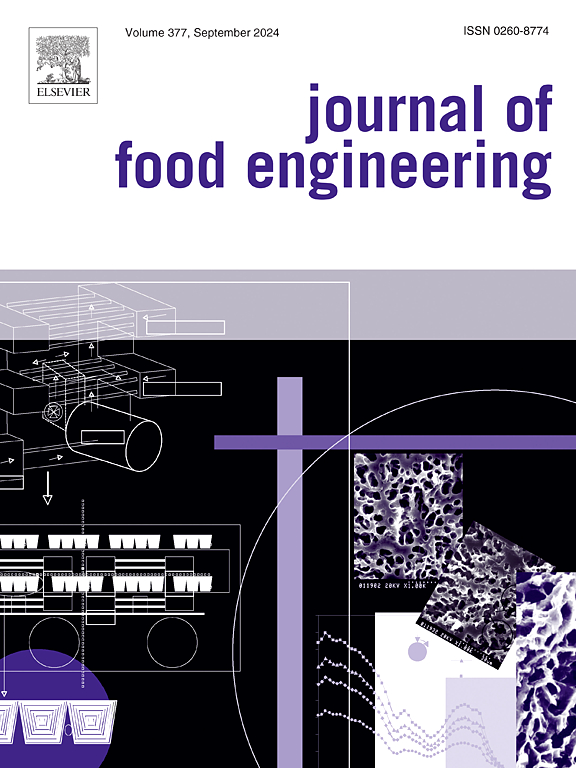Developing a radio frequency disinfestation technology for red jujubes with BaTiO3 as a filling material: Pest mortality, energy efficiency, and product quality
IF 5.8
2区 农林科学
Q1 ENGINEERING, CHEMICAL
引用次数: 0
Abstract
The Indianmeal moth (Plodia interpunctella), characterized by its rapid infestation rate and short developmental cycle, poses a grave threat to red jujubes during the storage period thereby resulting in substantial economic losses. Previous study showed that incorporating BaTiO3 (BT) in different volumes into food-grade silicone (FGS) for generating FGS/BT composite particles with diverse dielectric properties can significantly augment the heating uniformity of red jujubes during radio frequency (RF) treatment. This study adopted RF technology for disinfesting red jujubes, while evaluating effects of the filling materials and target temperatures on the disinfestation efficacy and product quality. Results indicated that the fifth-instar larvae of the Indianmeal moth were completely killed under the RF treatment with a target temperature of 52 °C and a holding time of 1 min. Meanwhile, the filling FGS/BT material significantly improved the utilization efficiency of RF energy, and effectively prevented the surface of red jujubes from charring, without significant impact on the product quality. These findings demonstrated the unique advantages of RF technology combined with filling materials for disinfesting red jujubes, providing the theoretical basis for further industrial applications.
以BaTiO3为填充物的红枣射频除虫技术的开发:害虫死亡率、能效和产品质量
印度飞蛾(Plodia interpunctella)侵袭速度快,发育周期短,对红枣贮藏期构成严重威胁,造成重大经济损失。以往的研究表明,将不同体积的BaTiO3 (BT)掺入食品级有机硅(FGS)中,制备具有不同介电性能的FGS/BT复合颗粒,可以显著提高红枣在射频(RF)处理过程中的受热均匀性。本研究采用射频技术对红枣进行除虫,同时评价填充材料和目标温度对红枣除虫效果和产品质量的影响。结果表明,在目标温度为52℃、保温时间为1 min的条件下,RF处理可完全杀灭印度蛾5龄幼虫。同时,填充FGS/BT材料可显著提高RF能量利用效率,有效防止红枣表面炭化,且对产品质量无显著影响。研究结果表明,射频技术结合填充材料对红枣进行除虫具有独特优势,为红枣进一步产业化应用提供理论依据。
本文章由计算机程序翻译,如有差异,请以英文原文为准。
求助全文
约1分钟内获得全文
求助全文
来源期刊

Journal of Food Engineering
工程技术-工程:化工
CiteScore
11.80
自引率
5.50%
发文量
275
审稿时长
24 days
期刊介绍:
The journal publishes original research and review papers on any subject at the interface between food and engineering, particularly those of relevance to industry, including:
Engineering properties of foods, food physics and physical chemistry; processing, measurement, control, packaging, storage and distribution; engineering aspects of the design and production of novel foods and of food service and catering; design and operation of food processes, plant and equipment; economics of food engineering, including the economics of alternative processes.
Accounts of food engineering achievements are of particular value.
 求助内容:
求助内容: 应助结果提醒方式:
应助结果提醒方式:


